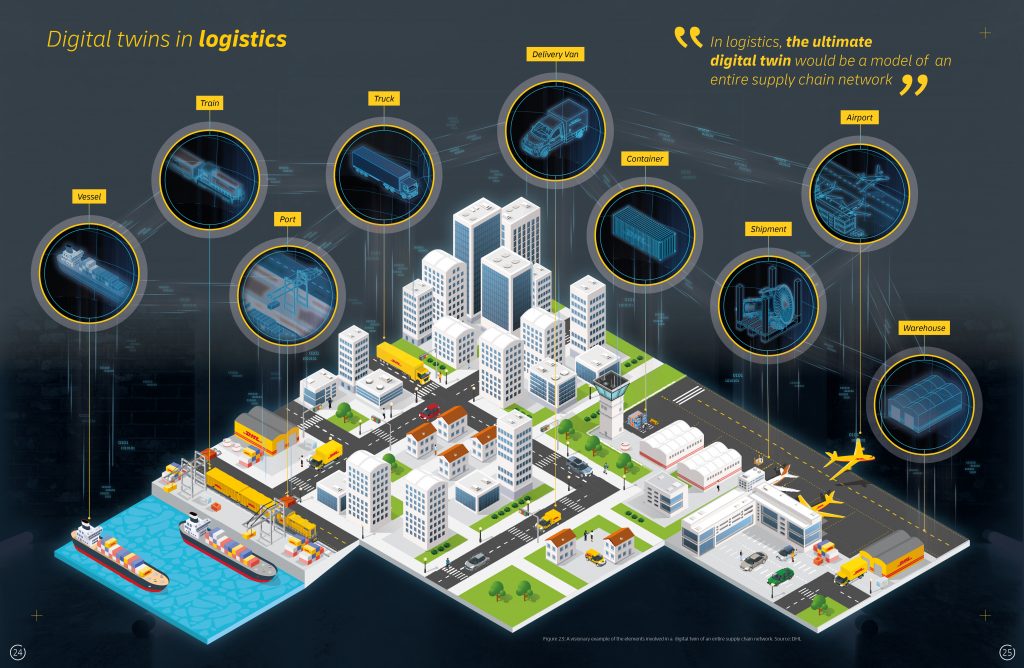DHL Trend Report Highlights ‘Digital Twins’ Concept
28th June 2019

DHL has released a new Trend Report on “Digital Twins in Logistics” at the inaugural Internet of Things (IoT) Day, at DHL’s Innovation Centre in Germany. The report explains the concept and rise of digital twins as well as how it creates value. The technology, which involves using digital models to better understand and manage physical assets is already well established in some industries and has the potential to significantly change logistics operations.
A digital twin is a unique, virtual representation of a physical thing that monitors and simulates both the physical state and behavior of the thing. The digital copy is continually connected to the physical object(s) and updates itself to reflect real-world changes. Applied to products, machines and even entire business ecosystems, digital twins can reveal insights from the past, optimize the present and even predict future performance.
“The market for digital twins is expected to grow more than 38 percent each year, passing the $26 billion mark by 2025,” explains Matthias Heutger, Senior Vice President, Global Head of Innovation & Commercial Development at DHL. “Digital twins offer unparalleled capabilities to track, monitor, and diagnose assets. They will change traditional supply chains, with a range of options to facilitate data-driven decision making and collaboration, streamlined business processes, and new business models. We are keen to work with our customers and partners to jointly explore applications in our industry.”
In logistics digital twins could be used in a variety of applications along the entire value chain, including the management of container fleets, monitoring of shipments or the design of logistics systems. IoT sensors on individual containers for example, show their location and monitor for damage or contamination. This data flows into a digital twin of the container network, which uses machine learning to ensure that containers are being deployed as efficiently as possible.

